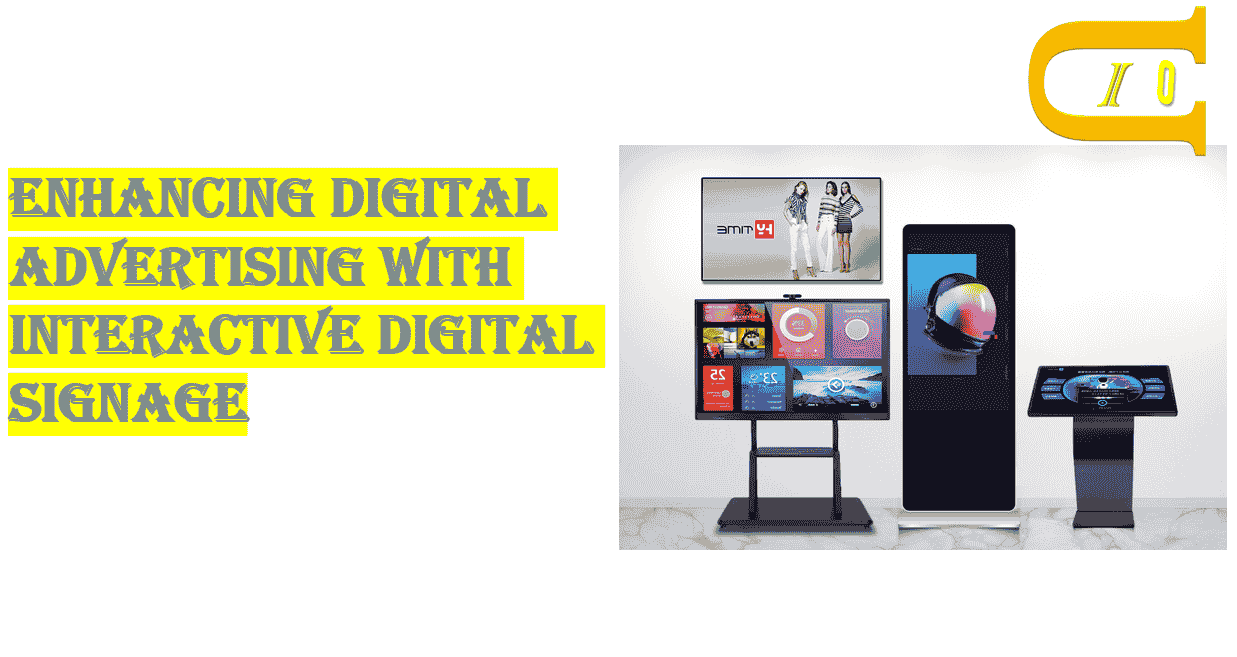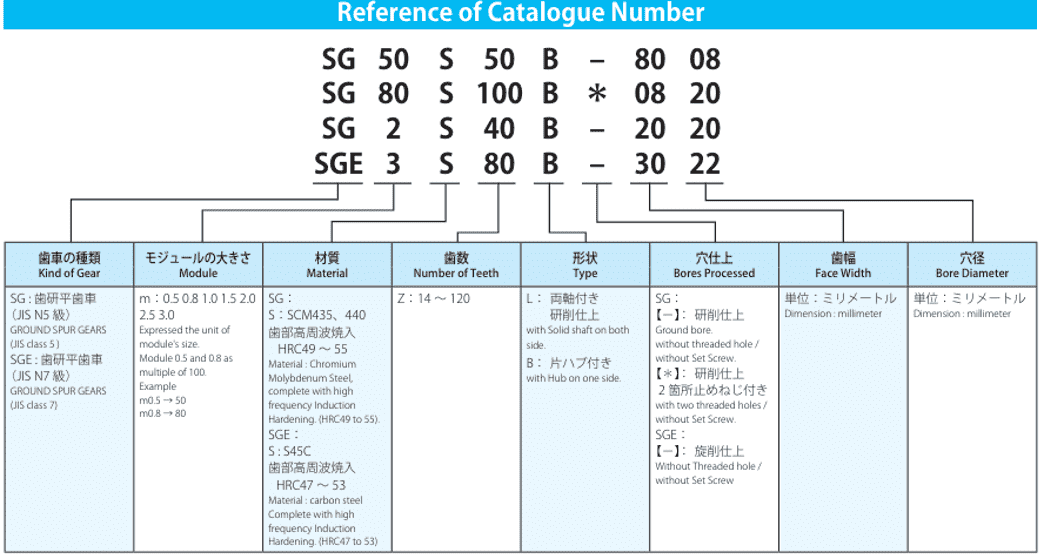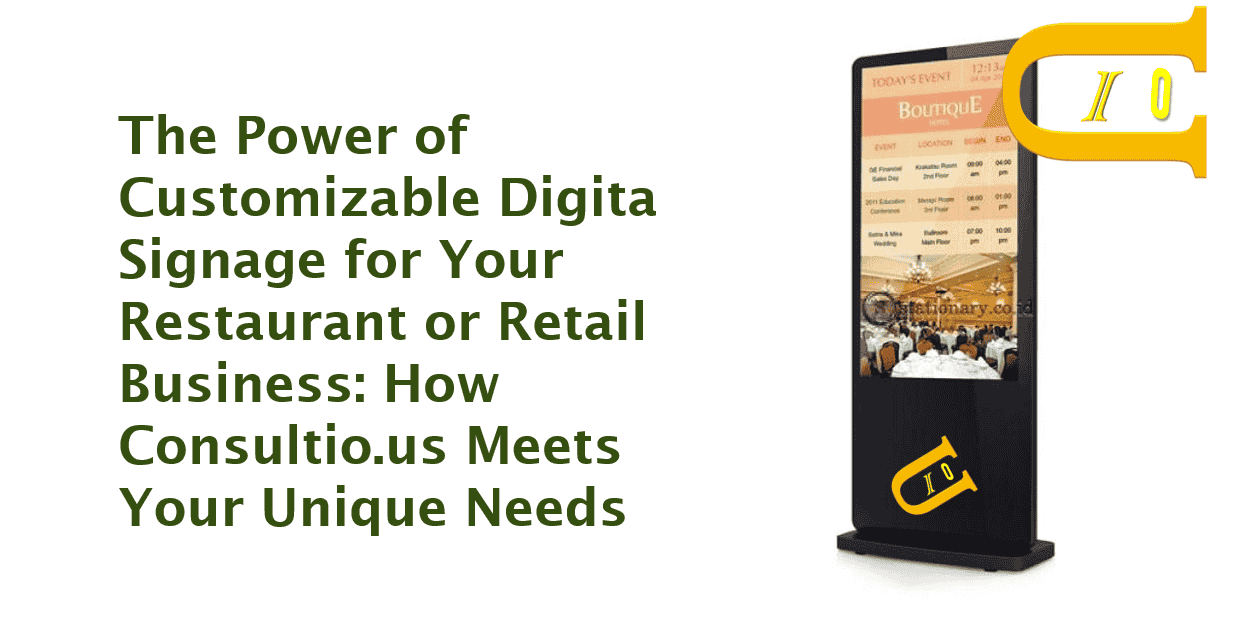Enhancing Digital Advertising with Interactive Digital Signage

Enhancing Digital Advertising with Interactive Digital Signage
In the world of digital marketing, businesses are constantly searching for innovative ways to capture consumer attention and engage with their target audience. One of the most powerful tools in this quest is interactive digital signage, which is revolutionizing the digital advertising landscape. As a growing trend, interactive signage offers more than just a static display of content; it allows consumers to interact with advertisements in real-time, creating a unique, immersive experience. This article explores how interactive digital signage enhances digital advertising and why it is a must-have advertising technology for businesses.
Table of Contents
-
The Role of Interactive Digital Signage in Digital Advertising
-
Benefits of Interactive Digital Signage for Digital Advertising
What is Interactive Digital Signage?
Interactive digital signage refers to digital displays that allow users to engage with content through touch, gesture control, voice commands, or mobile devices. These screens are commonly seen in public spaces such as shopping malls, airports, retail stores, and restaurants. Unlike traditional billboards or static advertisements, interactive signage invites consumers to become active participants by interacting with the content being displayed.
The integration of sensors, touchscreens, and cutting-edge software has made interactive digital signage a game-changer in the realm of digital advertising. It provides businesses with a dynamic platform to communicate with potential customers in a personalized and engaging way.
The Role of Interactive Digital Signage in Digital Advertising
1. Increased Consumer Engagement
Traditional digital ads, while effective, often face limitations in engaging the audience. Interactive digital signage breaks through these barriers by offering a more engaging and participatory experience. Consumers are more likely to interact with ads that allow them to explore, choose, or customize content. This deeper level of interaction increases consumer interest and enhances the effectiveness of the advertising technology.
For example, in retail settings, interactive displays can allow shoppers to browse product catalogs, check availability, or even create custom items on the spot. By offering a hands-on experience, businesses can engage consumers in ways that traditional digital advertisements simply cannot.
2. Personalization and Targeting
One of the key advantages of interactive signage is its ability to provide personalized experiences. These displays can be equipped with sensors that recognize the presence of a specific individual, allowing the content to be tailored to that person’s preferences or demographic profile. This type of targeted advertising can significantly increase the relevance of the message, leading to higher conversion rates.
For instance, a customer walking by a digital display in a clothing store may see personalized product recommendations based on their previous browsing habits or even their demographic information. Personalized interactions create a sense of connection between the consumer and the brand, making them feel valued and more likely to engage with the ad or make a purchase.
3. Real-Time Data Collection and Analytics
Another major benefit of interactive digital signage in digital advertising is the ability to collect real-time data on consumer behavior. With built-in analytics tools, businesses can track interactions with the signage, such as the types of content viewed, the amount of time spent interacting, and even the physical movement patterns of consumers around the display.
This data can provide valuable insights into customer preferences and behaviors, enabling businesses to optimize their advertising strategies. For example, if a particular ad receives higher engagement at specific times of the day, businesses can adjust their content or promotional schedules accordingly to maximize impact.
4. Enhanced Brand Experience
Interactive signage enhances the overall brand experience by allowing businesses to deliver memorable, impactful advertising that stands out from the crowd. A static advertisement may grab attention momentarily, but interactive signage has the power to create a lasting impression. Whether it’s an interactive game, a virtual try-on feature, or an immersive experience, these types of ads are more likely to be remembered by consumers.
By using advertising technology to create a unique brand experience, businesses can differentiate themselves in a competitive market. Interactive digital displays can also improve brand perception, as consumers tend to view brands that embrace innovative technologies as more forward-thinking and customer-oriented.
5. Improved Customer Satisfaction and Convenience
Interactive digital signage doesn’t just benefit businesses; it also enhances the customer experience. Consumers value convenience, and interactive signage can provide it in numerous ways. For example, in a restaurant, a digital menu with interactive features can allow customers to customize their orders, view ingredient information, or check nutritional facts. Similarly, wayfinding signs in large shopping centers can help customers navigate the space more easily, enhancing their overall experience.
By providing convenience and control over their experience, interactive displays foster customer satisfaction, which can translate into increased loyalty and repeat business.
Benefits of Interactive Digital Signage for Digital Advertising
1. Cost-Effective and Dynamic Content Management
Unlike traditional print advertising, which requires constant physical updates, interactive digital signage offers businesses the flexibility to change content instantly. This reduces printing and distribution costs and allows for dynamic, real-time updates. Advertisers can tailor their content to suit different times of the day, seasons, or even specific events.
For example, a retail store could display promotions for different products depending on the time of day or weather conditions. Dynamic content management ensures that businesses remain relevant and engaging without the need for constant physical replacements.
2. Seamless Integration with Other Digital Platforms
Interactive digital signage is not just a standalone tool—it can seamlessly integrate with other advertising technologies, such as mobile apps and social media platforms. This integration creates a cohesive digital advertising strategy that spans multiple touchpoints.
For instance, interactive displays can encourage consumers to share content on social media by offering incentives or rewards. They can also connect with mobile devices, allowing users to scan QR codes, receive notifications, or even make purchases directly through their phones.
3. Eco-Friendly Advertising
With the growing emphasis on sustainability, interactive digital signage offers an eco-friendly alternative to traditional advertising methods. By eliminating the need for paper, ink, and other physical materials, businesses can significantly reduce their environmental footprint while still delivering high-impact advertising.
Conclusion
As the demand for more engaging and personalized advertising experiences continues to rise, interactive digital signage is emerging as a vital component of the modern digital advertising strategy. By providing real-time engagement, personalized content, and valuable analytics, interactive signage enhances customer experiences and improves brand recall. As businesses continue to embrace innovative advertising technologies, interactive digital signage is set to play a pivotal role in the future of digital advertising.
Incorporating interactive signage into your advertising strategy can help differentiate your brand, increase consumer engagement, and ultimately drive sales and loyalty. It's time to embrace the future of advertising and take your campaigns to the next level with interactive digital signage.
Related Products
Here are some relevant stats and facts that could be used to support the points made in the article about interactive digital signage and its impact on digital advertising:
-
Increased Engagement:
- A study by Prysm found that interactive digital signage can increase consumer engagement by up to 400% compared to traditional digital displays.
- According to Intel, interactive kiosks increase customer interaction time by as much as 60% when compared to non-interactive displays.
-
Consumer Preference:
- 64% of consumers are more likely to purchase a product after viewing an interactive digital display, according to Zebra Technologies.
- Interactive advertising can lead to an 83% increase in consumer recall, as reported by Retail TouchPoints.
-
Real-Time Analytics:
- 52% of marketers use real-time analytics in their digital advertising efforts, including interactive digital signage, to adapt and optimize campaigns on the fly. (Source: Statista)
- A report by NCR indicated that 70% of brands using interactive digital signage report increased foot traffic and sales due to better targeting and personalized content.
-
Cost and Efficiency:
- Interactive signage can reduce print material costs by 30%, and 72% of marketers say digital displays are a cost-effective alternative to traditional forms of advertising. (Source: Digital Signage Today)
-
Environmental Impact:
- Digital signage can save the equivalent of 2.5 million sheets of paper per year in a single retail location by reducing the need for printed materials. (Source: EcoSignage)
-
Integration with Mobile Technology:
- 70% of people use their smartphones to engage with digital signage, whether it’s by scanning QR codes or receiving notifications. (Source: TechCrunch)
-
Brand Experience and Perception:
- A survey by Apex found that 61% of consumers are more likely to visit a store or restaurant if they see interactive digital displays in the window.
- 80% of people believe that brands using innovative technologies like interactive digital signage are more forward-thinking and customer-oriented. (Source: MarketingProfs)




